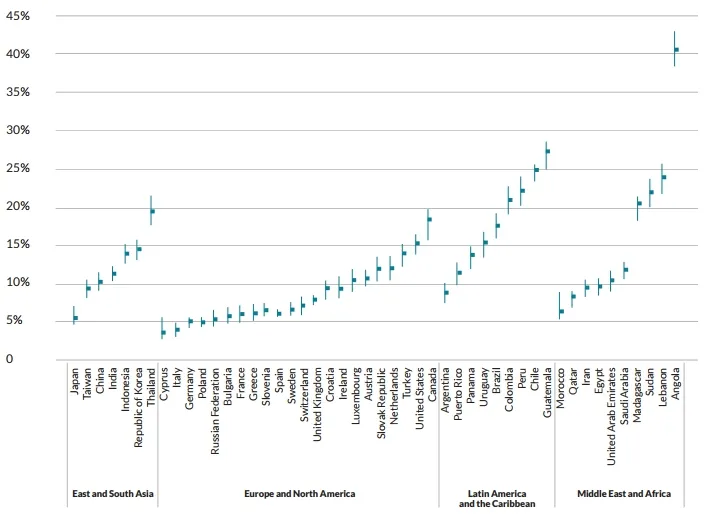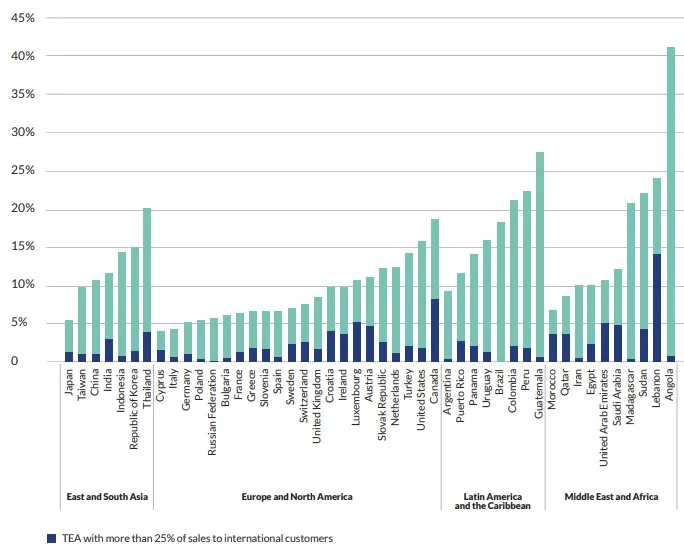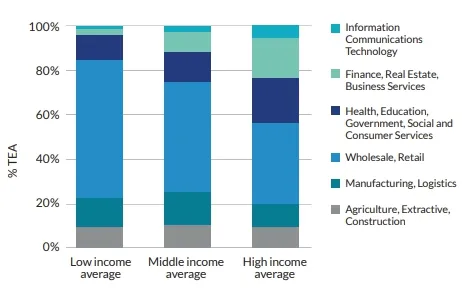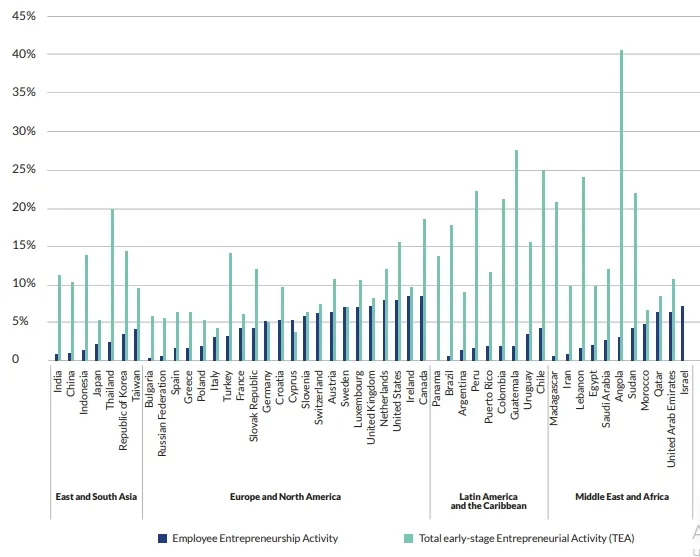

Successful entrepreneurship environment features: results of GEM research
Here is a detailed review of the global report “Global Entrepreneurship Monitor 2018/2019”
What environment is needed for successful entrepreneurship?
We found that data from the report “Global Entrepreneurship Monitor 2018/2019” can give us an answer to this question.
This report marks the 20th anniversary of GEM and shares with its readers information about entrepreneurship around the world. In this report, you will find the results of the research that has 164’249 participants from 49 countries.
The main goal of GEM is to show a comprehensive picture of entrepreneurship development. The researchers explored entrepreneurs’ profiles including demographics, motivations and ambitions, as well as business characteristics such as the level of innovativeness and industry participation. In addition to that, GEM breaks down some popular but unsupported myths about entrepreneurship through different insights across survey participants.
In this report, GEM has coined the term Total early-stage Entrepreneurial Activity (TEA) as the entrepreneurial activity that is centred on the period preceding and immediately after the actual start of a firm.
The lowest TEA rates are in European countries and the North America region. That’s so because high-income economies can give people alternative job options and level of competition is higher that can make starting a business less attractive. Chile is an exception here: more than 25% of the population are starting or running a new business there.
In the Middle East and Africa, there is a dual pattern: many economies of this region have TEA rate under 12%. However, the highest TEA rate in the world is in Angola — 42%.
Below you can find more detailed information.

Innovation
Innovative entrepreneurs are those who state their products or services are new to all or some customers and for which there are no or few competitors. You will be surprised to know what the economy is the most innovative. Chile shows the highest rate of innovation among new businesses — 48%. To a slightly lesser extent, Guatemala exhibits high rates combined with high innovation.
Among the Middle Eastern and African countries, Lebanon and Angola demonstrate substantial rates by virtue of high TEA rates.
The lowest rates of innovation level accompanied by low TEA rates are in Russia, Poland and Bulgaria — under 15%.
Below you can get more detailed information:

Internationalization
In the report, international entrepreneurs are those who have 25% or more of sales from customers outside their countries.
There is a reasonable trend: entrepreneurs from countries with a small population (Luxembourg, Cyprus, Slovenia, Qatar) often look for customers beyond their countries. And entrepreneurs from countries with a large population, like China, the United States, Indonesia, Brazil, provide their products and services to internal markets. But, as usual, there is an exception: India has more than 25% of entrepreneurs selling their products abroad.
You may think that open borders in some regions such as the European Union help entrepreneurs to sell beyond their countries. GEM researchers found that some European countries use open boards but still there are more countries where entrepreneurs are selling products mostly to domestic markets. For example, less than 10% of entrepreneurs in Poland, Bulgaria, the Netherlands and Spain are international.
By the way, the most internationalized economy is Lebanon.
Look at the picture below to learn more about internationalization.

Industry
GEM found an exciting trend in low-income economies: in every low-income economy, wholesale/retail businesses account for more than half of early-stage entrepreneurs.
In high-income countries, there is less wholesale/retail activity. For example, Austria shows the highest rate of health/education/government/social and consumer services early-stage entrepreneurs (33%). And Angola shows that 74% of entrepreneurs choose to do business in the wholesale/retail industry.
What is interesting is that the average prevalence of agriculture/extractive/construction businesses is relatively constant across income levels.
Look at the picture below to learn more

Entrepreneurial employee activity
GEM also explored different ways of entrepreneurship. The data about solo entrepreneurship, family business, entrepreneurial employee activity, gig and sharing economy are presented in the report. Here, we will speak about entrepreneurship employee activity.
Entrepreneurial employee activity (EEA) is an entrepreneurial activity by individuals inside an exciting company.
This way of entrepreneurship is especially popular in Europe. In Sweden, Germany and Cyprus, the rate of EEA is the same as TEA or even higher. Actually, the level of independent entrepreneurship in these countries is low. But in some other countries, such as the Netherlands, and Canada in North America, high levels of employee entrepreneurship complement high TEA rates.
You can find more detailed information about EEA below:

Business discontinuance
Entrepreneurs may discontinue a business for a range of reasons. In this part of the review, we will look at business discontinuance in different regions.
Follow the link to continue reading:
Successful entrepreneurship environment features: results of GEM research
Read new articles in our blog:
▶ Top Predictions about Blockchain Technology





